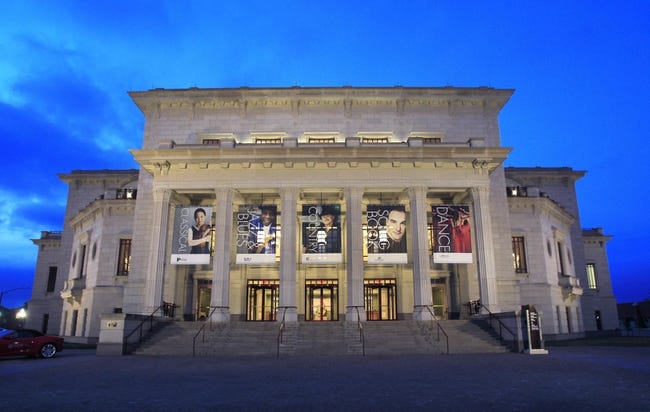In February 1998, the City Council designated “an area extending west from Range Line almost to U.S. 31 and from 126th Street to a point just south” of the newly opened Carmel Government Center to “be dedicated to a $77 million City Center project.” Construction of the 126th Street extension, renamed City Center Drive, began in July 1999 and formed the northern boundary of the area.

At the end of January 2000, the city council voted to make key adjustments to the City Center Redevelopment Area Plan. New projects added to the plan included an art museum and a performing arts center that would anchor the space and form its main focal point. This amendment projected costs of $30 million to complete the performing arts center. While Carmel abandoned plans for an art museum, the performing arts center remained a key part of the proposal.
In June 2005, the city council, by a slim margin of four to three, approved the Carmel Downtown Economic Development Plan that supported the proposed Center for the Performing Arts, although the price tag for the project had increased to $80 million. In 2007, the groundbreaking for the Center for the Performing Arts was a milestone in the development of a viable city center. The complex generated both excitement and opposition. The plans included a 1,600-seat concert hall, the Palladium, to provide a permanent home for the (CSO).
Many hailed the January 2011 ceremonial opening of the Center for the Performing Arts, which included the 1,600-seat Palladium, the 500-seat Tarkington, and the smaller black-box Studio Theater, as an important cultural development for Central Indiana. But the attention Carmel gained did not come without controversy. Tension mounted between the mayor’s administration and the city council because the city incurred more debt than anticipated to cover the cost of the Center for the Performing Arts and related construction. The initial cost of $80 million ballooned to $125 million. The new civic facilities also required a $2 million annual operating budget. Mayor James Brainard, unable to raise the money he expected from private partners, vowed to continue to find ways to ensure the center’s success. Ultimately, in 2012 he requested restructuring of debt and more monetary assistance from the city council. The city council questioned the wisdom of borrowing more money, especially when some of the ways public funds were spent came into question. However, with the overall success of the venue as part of the plan for the Carmel City Center, these criticisms waned.
The Center was a key component of Carmel’s arts-based economic development strategy. Having secured a home for the first time in its history, CSO underwent a period of growth. The Center also attracted The . Founded in 1915, the theater company had lost its home on the grounds of the with building renovations and then lost its next home at for the same reason. Other local arts companies that came to make the Center their home include Actors Theatre of Indiana, Central Indiana Dance Ensemble, Gregory Hancock Dance Theatre, and .
The Center provided space for another arts-related venture when singer Michael Feinstein located the Feinstein Foundation for the Education and Preservation of the Great American Songbook, later renamed the , there. Dedicated to maintaining “the canon of the most important and influential popular songs and jazz standards from the early 20th century,” the Foundation housed its archives and library at the Center as well.
The Center also launched its own programming, guided by a professional staff that routinely brought major artists to Carmel. The Palladium quickly gained a national reputation as a major concert hall. Each year, the Center Presents performance season offers more than 40 concerts and other events in the fields of pop, rock, country, jazz, classical, comedy, family programming, and more. Performers have included Joshua Bell, Tony Bennett, the B-52s, the Chieftains, Harry Connick Jr., Chick Corea, Sheryl Crow, Renée Fleming, Merle Haggard, Herbie Hancock, B.B. King, Kronos Quartet, Lang, Loretta Lynn, Wynton Marsalis, Graham Nash, Willie Nelson, Itzhak Perlman, Pink Martini, Smokey Robinson, Diana Ross, the Royal Philharmonic Orchestra, the Russian National Ballet, Earl Scruggs, Tedeschi Trucks Band, Yo-Yo Ma, and many more.
The Center’s education and outreach initiatives include programs for children and families, such as the interactive Peanut Butter & Jam concert series for preschoolers, the Palladium PALS reading club, educational videoconferences for students around the state, the Palladium Bookies reading club, the Luminaries women’s group, and classes in vocal performance, dance, stand-up comedy and ukulele.

Help improve this entry
Contribute information, offer corrections, suggest images.
You can also recommend new entries related to this topic.